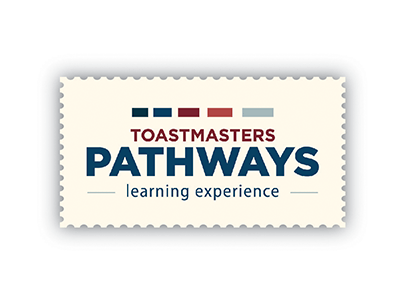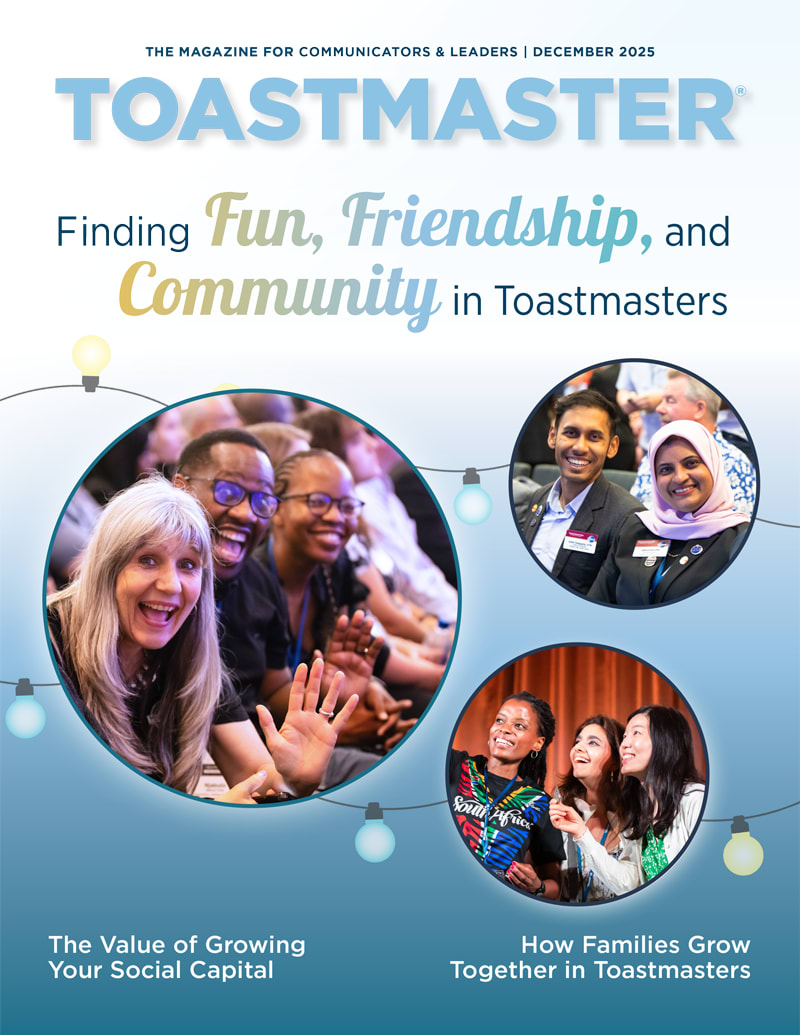
Giving an entertaining or inspirational speech that reaches the audience on an emotional level is one of the pleasures of Toastmasters. So where does that leave the research presentation?
A necessary but mundane assignment? Something to endure so you can get to one of those fun storytelling electives? Think again.
“Research” doesn’t have to mean dry science experiments or political analysis. Your research could focus on all sorts of topics: health issues, model trains, the funniest jokes ever told. As with any other speech, your aim is to engage your audience.
“Researching and Presenting” is currently a Level 1 project in each of the 11 paths in the Toastmasters Pathways learning experience. The project is being updated and repurposed as a Level 3 elective. That elective will launch sometime within the next few months, available only in paths selected after the launch. As you advance in your career, you may be called on to give work presentations on complex subjects. When that happens, you won’t want to turn your presentation time into nap time for your boss and coworkers.
Giving such a speech in your Toastmasters club will help—it’s like a practice run, says Pierre Andriani, a member of the Heart of England Club in Solihull, England. The Pathways project stretches your skills and awareness, he notes. “You are specifically asked to research a topic you are not familiar with. Therefore, you are placed outside of your comfort zone on purpose. By design, you will learn something new, and this is where personal growth thrives.”
What Makes a Good One?
As long as you’re gathering facts and the opinions of expert sources, it’s a legitimate research presentation. You may have to work a little harder and get a little more creative to make factual content sound intriguing, but it can be done.
Toastmaster Cate Arnold shares her experience with the Presentation Mastery path, and how she learned to incorporate storytelling at work and turning complicated topics into memorable ones.
For Eddie Landron, a member of Out-of-the-Box Toastmasters in Miami, Florida, it’s a matter of “breaking down the subject matter so it can be easy to understand. Making it relatable to everyday life lets your audience absorb the information.”
Like any other presentation, a research project’s main goal should be: to inform and engage the audience.
Andriani agrees. “It must be clear, relevant, and accessible. Even if it was a topic people might not have been interested in at first, you want them to leave thinking, I did not know that. Glad I heard that speech.”
In other words, just like any other presentation. Here are some ways to keep things lively and still informative.
Get Personal
For a presentation on income tax, Landron says, “I opened up with a true story about my first job, and I answered questions that I asked myself.” Then, he reviewed the history of the U.S. income tax system, starting with its creation by President Abraham Lincoln during the American Civil War.
The personal touch also worked well for Andriani when he presented a research paper to his peers. “I referenced examples from the people attending,” he recalls. “I also mentioned the previous speeches given that day. Finally, I acknowledged the people in the audience who helped me. It worked out well.”
Keep It Focused
The Pathways project calls for a 5- to 7-minute speech. You can’t cover everything about your subject in such a short time, and even if you could, you’d probably lose your audience. If you’re giving a presentation on tourist sites in a particular city, try narrowing it down to the top three places to visit, or getting even more specific, with the top three historic sites or family activities.
Make It Engaging
For some, “research presentation” suggests the need to use presentation software like PowerPoint. But tread carefully.
“I stay away from slides when possible,” Landron says. “I enjoy doing speeches live and with humor.” When he explained how a battery worked, he didn’t use a PowerPoint slide but gave a live demonstration in which he made a battery with two nails and a lemon.
Keep It Real
Using appropriate sources is an essential element of research presentations. You can present your own opinions, but you must show the facts they are based on. Furthermore, they must come from reputable, generally accepted sources. As the Pathways assignment points out, a scientific study in a recognized journal is acceptable, but a comment from a personal blog is not.
The Bottom Line
Like any other presentation, a research project’s main goal should be: to inform and engage the audience. Every point you make should serve that purpose.
“Remember,” Andriani says, “people are in the audience because they really are interested in what you have to say. Make sure you give them your best.”
Kate McClare, DTM , is a professional writer and editor who joined Toastmasters in 2011. She is a member of Miami Advanced Toastmasters Club in Kendall, Florida, and an Area Director for District 47, Southeast Florida and The Bahamas.
Related Articles

Communication
Do Your Due Diligence

Presentation Skills
What is Plagiarism and How Can You Avoid It?

Personal Growth



 Previous
Previous
 Highlights From the Pathways Project
Highlights From the Pathways Project
 Previous Article
Previous Article